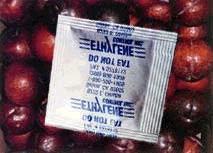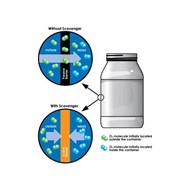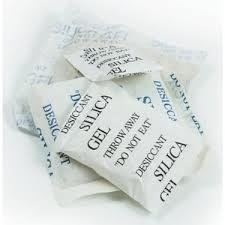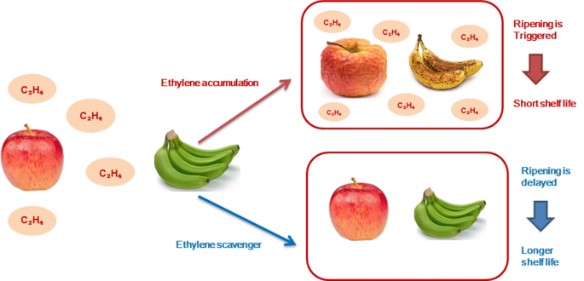
ACTIVE PACKAGING AND LONGER SHELF LIFE



Active packaging is a form of smart packaging that intentionally absorbs or releases compounds from or to the food incased in it. These compounds are added to extend the quality and shelf life of the food product. They do so by slowing down internal reactions that degrade the food. These include lipid oxidation, microbial growth, and loss of moisture.
Scavengers and Emitters are the two types of compounds incorporated into active packaging. In this blog, we will discuss the different types of scavengers.
Scavengers have historically been packed in separate sachets within the primary packaging but now can also be embedded within the primary packaging structure. Technological development has helped reduce costs and simplified manufacturing and use in many ways.
There are 3 types of scavengers:
- Ethylene Scavengers: Ethylene scavengers slow down the ripening process of the contents. They are usually added to the packaging in sachets. Ethylene scavengers contain zeolite or potassium permanganate and absorb ethylene and moisture released to reduce senescence. They also contain sodium metabisulfite salt which releases sulfur dioxide if it comes in contact with water.
If the scavenger is incorporated in the headspace of the packaging, 1-methyl cyclopropane is used to diffuse ethylene blockers and slow senescence.


- Oxygen Scavengers: These contain iron or ascorbic acid and stall oxidation. They also inhibit microbial growth. The substrate of choice is incorporated into a polymer structure as either light-sensitive dyes or sacrificial unsaturated dienes. Recent development has also allowed consumers to activate oxygen scavengers in opened resealable packages.

- Moisture Scavengers: Moisture scavengers control moisture inside a package and absorb any liquid seeping from the food. Many different substrates are known to absorb excess moisture. These include clays, humectants, zeolites, and high-capacity hydrogels.

In the next blog, we will cover the other type of compounds used in active packaging: Emitters.






